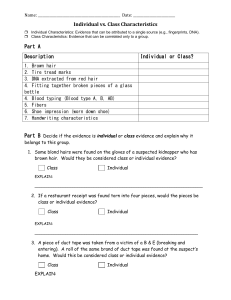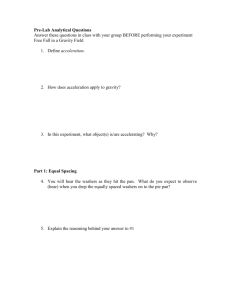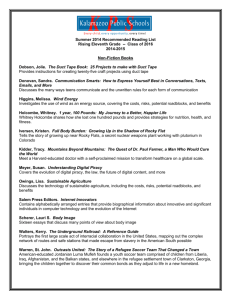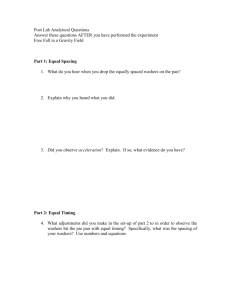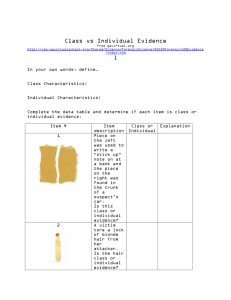Activity: Construct a Car
advertisement
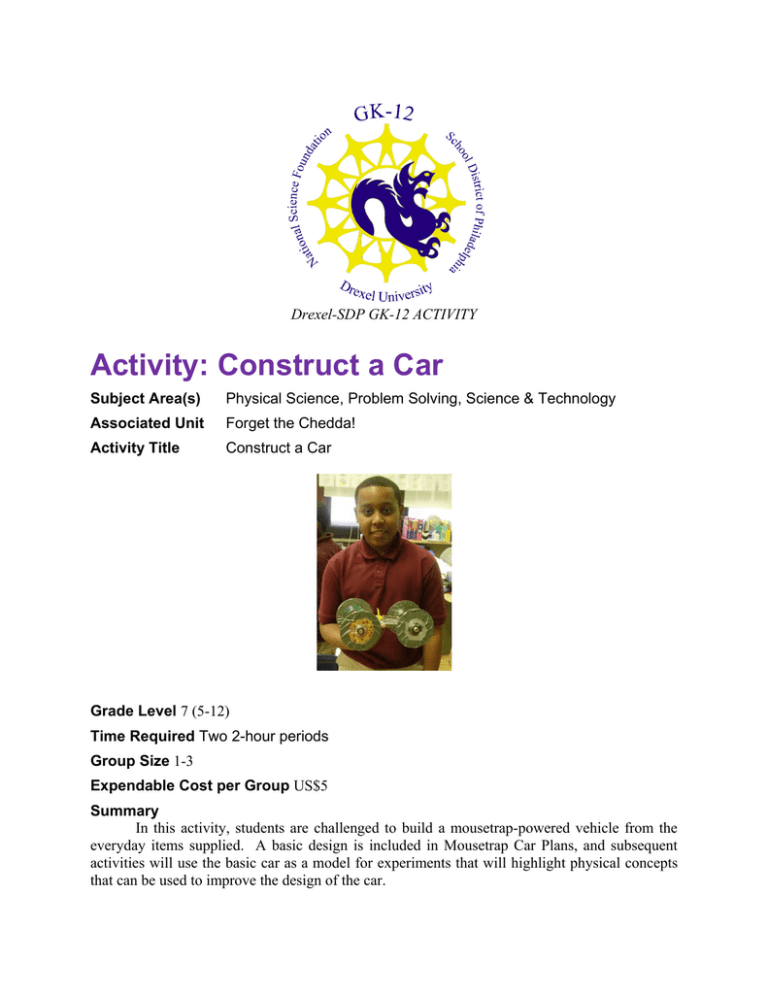
Drexel-SDP GK-12 ACTIVITY Activity: Construct a Car Subject Area(s) Physical Science, Problem Solving, Science & Technology Associated Unit Forget the Chedda! Activity Title Construct a Car Grade Level 7 (5-12) Time Required Two 2-hour periods Group Size 1-3 Expendable Cost per Group US$5 Summary In this activity, students are challenged to build a mousetrap-powered vehicle from the everyday items supplied. A basic design is included in Mousetrap Car Plans, and subsequent activities will use the basic car as a model for experiments that will highlight physical concepts that can be used to improve the design of the car. Engineering Connection This activity depends on students’ ability to interpret and follow instructions and diagrams. Interpretation of architectural drawings or computer aided drafting (CAD) designs is necessary for many engineering processes such as construction or manufacturing. Keywords Build, construct, mousetrap, car, plans Educational Standards PA Science: o 3.1.7 – Unifying themes o 3.2.7.D – Know and use the technological design process to solve problems • Learning Objectives After this activity, students should be able to: • Follow a diagram • Order and align components of a mousetrap vehicle • Identify and use variety of design strategies Materials List Each group needs: • Container to keep their parts and car To share with the entire class: • Selection of building materials: o o o o o o o o o o o o o o o Compact discs 1/2” Wood dowels (with 13/64” holes bored in each end) Large craft sticks (with ¼” holes drilled in each end) 1/2” inner diameter rubber grommets Fully threaded ¼” x 3” hex head bolts 1/4” lock washers 1/4” star washers 1/4” finish nuts 1/4” fender washers 1/4” washers 1/4” wood screws 1/2” Eyebolts GOOP adhesive Wire twist ties Duct tape 2 Introduction / Motivation Who has built things at home? (Poll for show of hands). Even if you don’t feel like you can build something, I’m sure you can put together a mousetrap-powered car. What are some things you need to build something like a mousetrap car? (Don’t show materials yet; write down a list of parts that form a car, like wheels, body/frame/chassis, axles). What do you think you’d use to build these parts? (students may describe the materials, so guide them in the right direction: washers/CDs, mousetrap/craft sticks, screws/bolts, wood dowels/bolts). Each group will get some plans for building a basic car. Look through these plans, get an idea of what you want to build, and then get the materials you need. Remember that you will have two weeks to work on the cars, so today is an appropriate day to glue your materials together (so the adhesive cures). If you will be gluing parts together, place newspaper on your desks. Procedure Background Materials were selected to avoid the need (or temptation) to use power tools. The different types of materials: bolts, washers, screws, CDs, wood dowels, etc., should be distributed in bins at the front of the room and students should be able to easily help themselves to materials. Screwdrivers are recommended as a tool for tightening screws and releasing mousetrap springs. Before the Activity • Materials put at front of room • Distribute newspaper cover for desks • Use pen/paper clip/drill bit to clear GOOP nozzle With the Students 1. Supervise their building. 2. Suggest that students duct tape parts together after using glue. Attachments chedda_1_activity_construct_a_car_plans.pdf Safety Issues • Adhesive fumes. Use in well-ventilated area. Troubleshooting Tips Use duct tape to your advantage: • Build cars in 2-step process, using duct tape to secure parts during adhesive curing time. • Rear-wheel metal washers may slip when pulled by the mousetrap arm. Tear or cut strips of duct tape so that it can be wrapped around the axle, and push a CD mounted on a rubber grommet over the bolt or nut wrapped in duct tape. • If using eyebolts, wood dowels can be centered by wrapping strips of duct tape on either side of eyebolt(s). 3 Owner Drexel University GK-12 Program Contributors John C. Fitzpatrick, Mechanical Engineering and Mechanics, Drexel University Copyright Copyright 2008 Drexel University GK-12 Program. Reproduction permission is granted for nonprofit educational use. 4

